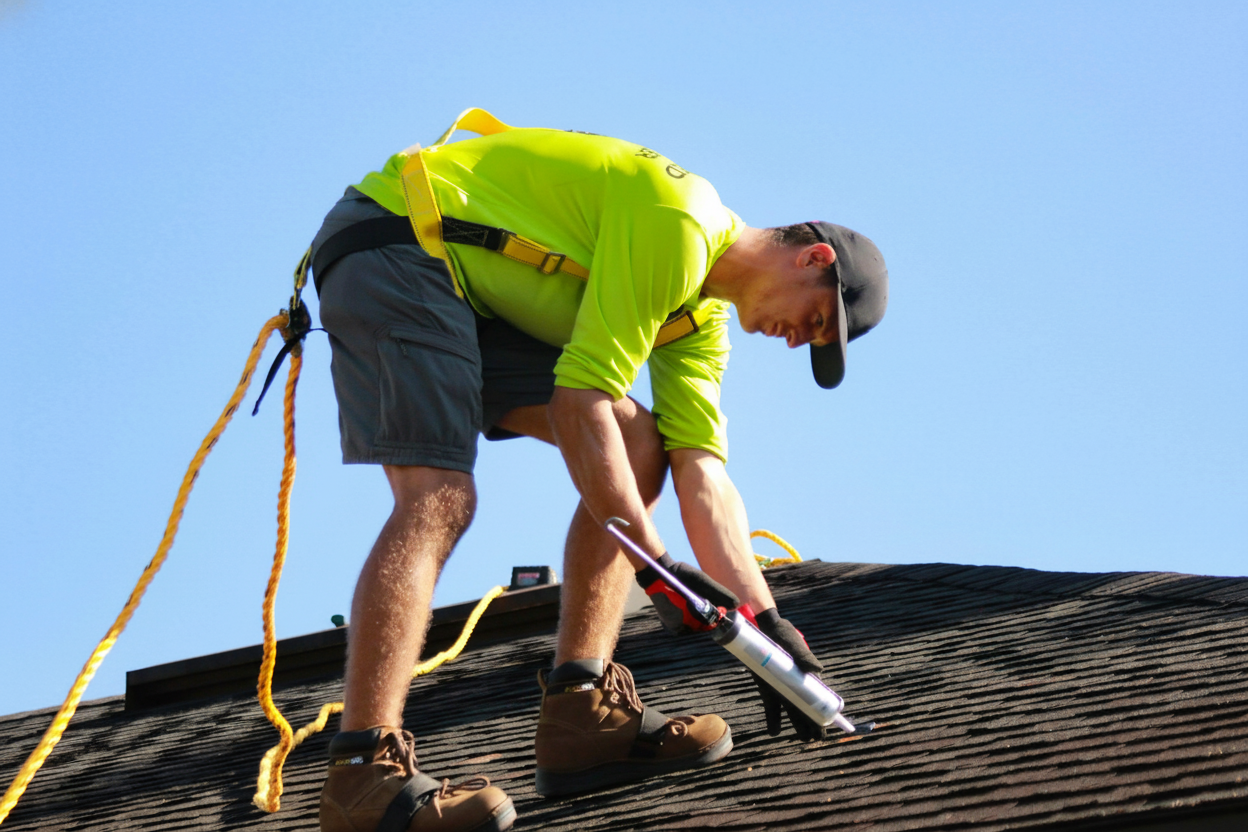
How to Walk on a Tile Roof Without Breaking Tiles in 2025
Maintenance & Repair
Tile Roofing Installation
October 9,2025
How to Walk on a Tile Roof Without Breaking Tiles in 2025

Alt text: Professional roofer demonstrating safe techniques while walking on a tile roof with proper safety equipment and soft-soled shoes
Tile roofs add beauty and durability to your home, but walking on them requires special care. One wrong step can crack tiles, cause leaks, and lead to expensive repairs. Whether you need to inspect for damage, clean gutters, or handle maintenance, knowing the right techniques protects both you and your roof.
Important: Tile roofs are not designed to support concentrated foot traffic. Clay, concrete, and ceramic tiles can crack under pressure when stepped on incorrectly, even if they withstand decades of weather.
This guide shows you how to safely walk on your tile roof, what tools you need, and how to prevent damage while maintaining your home.
Essential safety gear for tile roof access
Before stepping onto any tile roof, gather the right equipment. Proper gear distributes your weight and keeps you secure.
Required safety equipment:
- Soft-soled shoes with good grip (rubber-soled sneakers work best)
- Safety harness attached to a secure anchor point
- Roof ladder or foam walking pads
- Non-slip gloves for better grip
- A helper on the ground for emergencies
Never attempt roof work alone or during wet conditions. Dry tiles provide better traction and reduce slip risks. If you are unsure about your tile roof’s condition, have a professional assess it first.
Proven techniques to walk on tiles without damage
Walking on tile roofs requires deliberate movement and weight distribution. Follow these methods to minimize tile stress and prevent cracks.
Step on the lower third of each tile
Tiles are strongest where they overlap and rest on the roof structure. Always place your foot on the lower third of each tile, never in the center. The center flexes under pressure and cracks easily.
Pro tip: Follow the overlap pattern of your tiles. Different types of tile roofs have varying overlap configurations, but the principle remains the same.
Use foam pads or a roof ladder
Foam pads and roof ladders spread your weight across multiple tiles instead of concentrating it on one spot. This significantly reduces cracking risk. Position pads carefully and move them as you progress across the roof.
Avoid ridges, valleys, and edges
These areas lack the structural support found elsewhere on your roof. Ridges and valleys often have different tile configurations that make them more fragile. Step near rafters and supported sections instead.
Move slowly with deliberate steps
Quick movements increase impact force on tiles. Take your time, test each step before transferring full weight, and maintain three points of contact when possible. This approach works for clay tile roofs, concrete tiles, and other materials.
Walk in the same direction as tile overlap
Tiles are installed in a specific pattern for water drainage and structural integrity. Moving against this pattern can dislodge or shift tiles. Align your path with the natural tile layout.
Common mistakes that cause tile damage
Understanding what not to do is just as important as knowing proper techniques. Here are the most frequent errors homeowners make:
| Mistake | Why It Causes Damage | Better Alternative |
|---|---|---|
| Stepping in tile centers | Creates maximum flex and stress | Step on lower third near overlap |
| Wearing hard-soled boots | Concentrates weight in small area | Use soft rubber-soled shoes |
| Walking during rain | Wet tiles are slippery and fragile | Wait for completely dry conditions |
| Ignoring tile age | Older tiles are more brittle | Have professional assessment first |
| Rushing across roof | Increases impact force | Move slowly and deliberately |
Warning: Repeated foot traffic weakens tiles over time, even with proper technique. Plan your route to minimize crossing the same areas multiple times.
If you notice signs of tile damage during inspection, address repairs promptly. Cracked tiles allow water intrusion that damages your roof structure and home interior.

Alt text: Roofing professional carefully inspecting a tile roof while demonstrating correct weight distribution and stepping on tile edges
Inspection and maintenance after walking
After completing your roof work, inspect the areas where you walked. Look for:
- Cracked or chipped tiles that need replacement
- Displaced tiles that shifted out of position
- Debris in gutters that could cause water backup
- Signs of water damage or leaks around flashing
- Loose or damaged underlayment visible through gaps
Regular tile roof cleaning and maintenance extends your roof’s lifespan. Schedule professional inspections annually, especially after severe weather.
If you discover damage beyond your comfort level to repair, contact experienced roofing professionals. Tile roof leak repair requires specific expertise to prevent further problems. For comprehensive care, tile roof installation and replacement specialists can assess whether repairs or replacement makes more sense.
Protect your tile roof with Foxhaven
Walking on tile roofs safely requires the right knowledge, tools, and techniques. While these guidelines help you handle basic maintenance, some situations call for professional expertise. At Foxhaven, we specialize in tile roof care, from routine inspections to complex repairs.
Our experienced team understands how to work on tile roofs without causing damage. We use proper equipment, follow industry best practices, and prioritize your roof’s longevity. Whether you need a safety assessment, maintenance service, or emergency repair, we provide reliable solutions you can trust.
Contact Foxhaven today for a free consultation and let our professionals handle your tile roof with the care it deserves.

